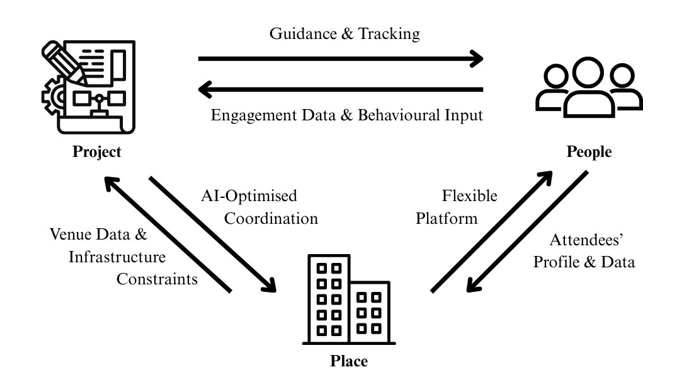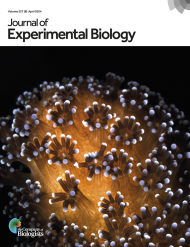27 October 2025
By Liew Yao Rong
We are delighted to present to you the first prize-winning essay by Liew Yao Rong (Taylor University) from our essay competition, ‘Innovative ideas for the future of sustainable events’. We received a high number of thoughtful and innovative essays, and while it was a tough decision for our Sustainability Board to make, this essay stands out. Here is Liew Yao Rong’s innovative idea that could make the events of the future more sustainable:
Introduction
Scientific events are important to tackle global issues. Despite offering venues for international knowledge exchange, these events are facing an increasing number of unsustainable environmental problems. Around 1.6 metric tonnes of CO₂ are emitted per passenger on a single round-trip flight across the Atlantic, more than the annual emissions per person in many underdeveloped countries (Glossary| DataBank, n.d.). Air travel alone is responsible for 75–90% of all conference-related emissions (Stark, 2024). Therefore, this essay looks into how the People-Place-Project (PPP) conference framework provides a new alternative by focusing on three main aspects: (1) behavioral engagement through gamified carbon tracking, (2) distributed participation via decentralization, portable hubs and holographic technology, and (3) AI-optimised logistics. The research issue that drives this conversation is: how can scientific conferences lower carbon emissions associated with travel without sacrificing global accessibility and knowledge sharing through efficient coordination?
Theme Analysis
Modern challenges in travel-related waste and resource use
Due to academic growth and globalisation, the number of international scientific conferences has more than doubled since 2000 (Nature Index, 2022). As we now know, air travel alone is a major carbon footprint contributor, yet a huge portion of these flights is unnecessary. According to studies, from 30 to 50% of participants can take part virtually without compromising a chance to build relationships (Tao et al., 2021). Even though there are more environmentally friendly options, such as buses or trains, for shorter distances, many people who prefer to engage physically choose to travel by air (Soliman, 2024).
On the other hand, the embedded carbon footprint in travelling, for example hotel stays, contributes 20–30% of an attendee’s carbon footprint due to the energy required for water, washing, lighting, and cooling (UNWTO, 2021). As food waste, single-use packaging, and disposable event items increase, the problem gets worse, although awareness had been planted. Attendees typically produce 2.5 kg of waste per day, which may be due to a lack of engagement (EPA, 2024).
Rethinking conferencing: the People-Place-Project (PPP) conference framework for sustainable participation
The People-Place-Project (PPP) framework reimagines scientific events through interlinking human behavior, venue decentralization, and AI technology. We know that environmental impact is not caused by individual factors, but rather the big picture interrelationship of how people behave and where and how events are hosted and organised. The framework proposes coordination across these three dimensions. ‘People’ focuses on behavioral guidance and engagement; ‘Place’ considers the decentralization and alternatives of event venues; and ‘Project’ proposes technologies to optimise logistics and coordination to support both people and place dimensions. For example, alternative substation venues for events (places) are recommended and managed by AI logistics (projects) to attendees, while their behavior and choices (people) are guided through a reward and tracking system using AI systems; refer to figures 1.0 and 2.0. I called it the “side quest in the adventure journey to solve global issues”.

Figure 1.0: Interrelationship of people, place and project

Figure 2.0: PPP conference framework
Place dimension: decentralized conferencing venues
In ordinary conference circumstances, you usually have one venue, and attendees can be based near or far away from it. Decentralized conference hubs help to reduce reliance on long-distance flights. They offer options by establishing regional substations in urban centers (locations selected based on the clustering of participants, sustainability features, venue availability, and public transit accessibility) for participants to choose the hub that is closer to them in proximity. This would give participants the chance to choose hubs in which they will not be required to travel extensively, reducing their reliance on unnecessary flights while maintaining worldwide participation for the event. These venues are also integrated with hologram and augmented reality technology to allow live interaction and discussion despite being separated.
In cases where a suitable venue is not available in the proximity of participants based in harder accessible areas, such as rural regions, portable PTFE domes, which are lightweight, retractable structures equipped with photovoltaic panels and hologram-enabled systems, can be installed to accommodate around 15–30 attendees. A similar approach was done at the COP26 summit, where technology was used to build off-site zones using modular pavilions in several locations to include more participants and minimize travel by 30% (UNFCCC, 2021).
According to decentralized systems theory, modular and adaptive structures are more effective in terms of distributed functionality, resilience, and efficiency. As a single round-trip flight across the Atlantic emits approximately 2 tonnes of CO₂ for each participant, not going on intercontinental travel would avoid thousands of tonnes of CO₂ in a single event.
Project Dimension: AI-Optimized Logistics and Coordination
As substations are introduced, how can attendees be efficiently directed to the nearby venues? This is where AI systems and digital coordination tools help with decision-making. The AI system analyzes attendee data, such as current location, travel requirements, and access to public transit, and based on this, suggests optimal locations. The system then generates a personal itinerary, including details for each participant’s trip and how to reach their destinations. Participants are granted points when they follow AI recommendations, which can be exchanged for rewards or additional privileges, bringing behavioral goals closer to the environmental ones.
A similar concept was implemented by the European Geosciences Union’s 2022 hybrid conference. Their AI logistics tool matched attendees who were travelling and provided better accommodation options. For example, hotels near the venue, which reduced carbon impact, resulted in a 40% reduction in per capita emissions compared to pre-pandemic events (EGU, 2022). According to system coordination theory, integrating multiple factors and resources through information sharing and adaptive control can greatly achieve efficiency (Malone & Crowston, 1994). This tool not only improves logistical efficiency but also exemplifies how decentralization, when supported by data-informed coordination, can greatly reduce carbon footprints.
People dimension: behavior control and engagement
Decentralization and AI systems provide alternatives for reducing carbon footprints, but they rely on attendee compliance. Humans often prioritize immediate rewards over long-term benefits, making operant conditioning relevant where behavior can be shaped through consistent reinforcement (Skinner, 1953). A gamified incentive system, implemented through a mobile application, allows attendees to earn points for sustainable actions, such as using public transport or reusable items, by submitting proof. To ensure fairness, a ranking system tracks progress and enables users to report false claims. This transparency promotes peer accountability and builds social motivation for sustainable behavior.
For those who have to travel by air, “carbon side quests” offer compensatory ways to earn points and recognition. One example is a conference travel kit, which is checked out and returned daily, containing reusable items such as a water bottle, cutlery, and a power bank. These kits are tagged and tracked to encourage responsibility and behavioral reflection. Hence, the real-time carbon tracking features, challenges, and score comparisons can keep attendees engaged during breaks and reinforce sustainable choices throughout the event.
A similar model was used in the American Geophysical Union’s (AGU) 2021 hybrid event, including integrated carbon-tracking tools and digital feedback systems. Visible progress indicators and real-time rewards will lead to higher satisfaction and stronger intentions to join future hybrid events (Future Earth, 2021).
Conclusion
The People-Place-Project (PPP) conference framework presents a practical and innovative approach to cutting carbon emissions from scientific conferences without sacrificing global reach or knowledge exchange. By combining behavioral incentives, decentralized venues with holographic connectivity, and AI-optimised logistics, it tackles key issues like travel emissions and participant engagement. Aligned with SDG 11 (sustainable and resilient infrastructure), SDG 12 (efficient resource use and waste reduction), and SDG 13 (climate action), the PPP framework shows how coordinated innovation across people, place, and technology can make scientific events both environmentally sustainable and globally inclusive.
References
European Geosciences Union. (2022). EGU General Assembly 2022 sustainability evaluation. https://egu22.eu/about/green_egu.html
Future Earth. (2021). AGU 2021 Fall Meeting. https://futureearth.org/event/agu-2021/
GHGRP 2022: Waste | US EPA. (2024, October 29). US EPA. https://www.epa.gov/ghgreporting/ghgrp-2022-waste
Glossary | DataBank. (2023). https://databank.worldbank.org/metadataglossary/world-development-indicators/series/EN.ATM.CO2E.PC
Malone, T. W., & Crowston, K. (1994). The interdisciplinary study of coordination. ACM Computing Surveys, 26(1), 87–119. https://doi.org/10.1145/174666.174668
Nature Index. (2022). Global research collaboration strategies that support researchers | For Librarians | Springer Nature. https://www.springernature.com/gp/librarians/the-link/open-science-blogpost/global-research- collaboration-strategies-bibliometric-insights/26727938
Skinner, B. F. (1953). Science and Human Behavior. Macmillan. https://books.google.com.my/books?hl=en&lr=&id=Pjjknd1HREIC&oi=fnd&pg=PA1&dq=S kinner,+B.+F.+(1953).+Science+and+Human+Behavior.+Macmillan.&ots=iSskByB4qG&sig
Soliman, A. (2024). Academics say flying to meetings harms the climate — but they carry on. Nature. https://doi.org/10.1038/d41586-024-02965-7
Stark, K. (2024, January 10). Conference Travel and carbon emissions: In the midst of COVID-19, some people are doing the math. KQED. https://www.kqed.org/science/1966164/covid-19-is-pushing-scientific-conferences-online-ma ybe-thats-where-they-belong
Tao, Y., Steckel, D., Klemeš, J. J., & You, F. (2021). Trend towards virtual and hybrid conferences may be an effective climate change mitigation strategy. Nature Communications, 12(1). https://doi.org/10.1038/s41467-021-27251-2
UNFCCC. (2021). COP26 sustainability report. United Nations Framework Convention on Climate Change. https://unfccc.int/sites/default/files/resource/COP26-Sustainability-Report_Final.pdf
United Nations World Tourism Organization. (2021). Hotels and climate change: Carbon footprint assessment for the accommodation sector (2nd ed.). https://www.unwto.org/sustainable-development/tourism-emissions-climate-change








You must be logged in to post a comment.